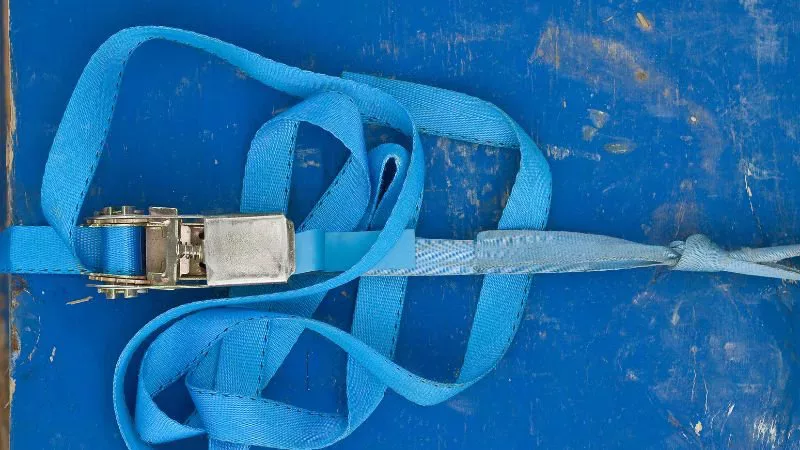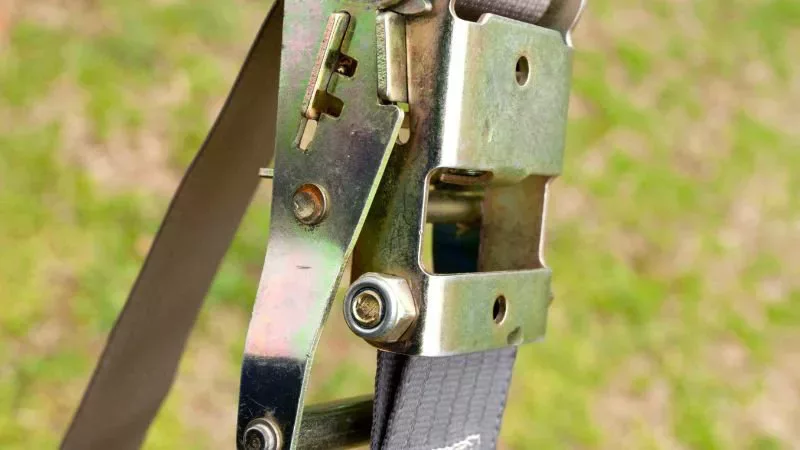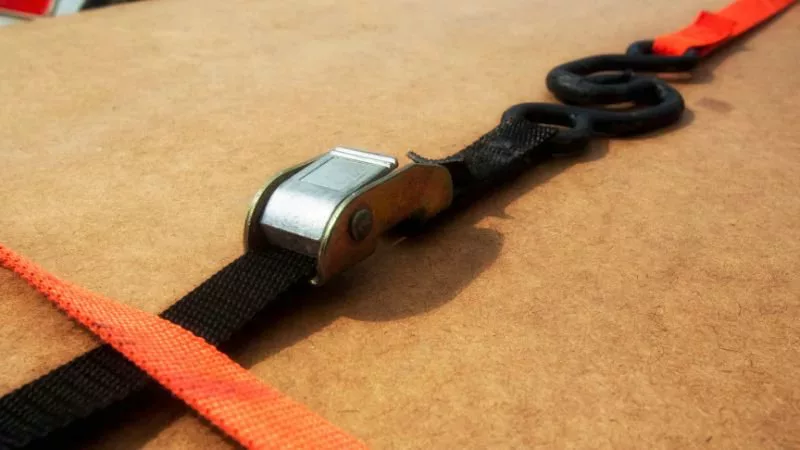
Cam buckle straps are an essential tool for securely tying down cargo, whether you’re hauling gear on your vehicle roof rack, bundling items together, or strapping equipment to a trailer. But what exactly is a cam buckle and how does it work?
In this guide, we’ll dive into everything you need to know about cam buckle straps – how they work, their key benefits, when to use them or ratchet straps, and step-by-step instructions for threading and releasing them properly. By the end, you’ll be a cam buckle pro ready to strap down your gear with confidence on your next adventure.
What is a Cam Buckle
Cam buckles or cam straps are a type of tie down strap that you may find extremely handy for securing cargo. They consist of a metal buckle and webbing, typically made from durable materials like polyester or nylon.
The principle is quite straightforward: you thread the webbing through the buckle and the cam mechanism locks it in place.
Why choose a cam buckle when securing cargo?
The strength of a cam buckle system lies in its ease of use. To secure an item, you simply have to pull the free end of the webbing until it’s tight around your cargo. The cam buckle’s teeth grip the webbing, preventing slippage and keeping your items secure. This ease of operation makes cam buckles a favorite for lightweight to medium-duty applications.
What are cam buckles used for?
1. In the Moving Industry
In the moving industry, your cam buckle straps come in handy for transporting fragile cargo. By providing firm support without overtightening, cam buckle straps help to prevent damage to sensitive items. When moving delicate furniture or electronics, the ease of use allows for a swift securing process, reducing the likelihood of mishaps during transit.
2. In Personal Transport
When it comes to personal transport, you’ll find cam buckle straps extremely useful for securing items to roof racks or within trailers. Their lightweight nature makes them ideal for everyday use, particularly when you’re handling loads that don’t require the intense force of ratchet straps. For instance, when tying down a kayak or a bicycle, you would want a securing method that’s firm yet gentle enough not to cause strain on your gear.
3. For Outdoor Recreation
In outdoor recreation, cam buckle assemblies are perfect for fastening equipment without risking over-compression which could potentially damage your gear. Whether you’re securing a sleeping bag to a backpack or fastening gear to an ATV, cam buckle straps offer an efficient solution. Their tie-down webbing accommodates variable loads, simplifying the process of locking down items of different sizes and weights and providing peace of mind while you head out on your adventure.
How Much Weight Can a Cam Buckle Hold?

The Working Load Limit (WLL) of cam buckle straps varies depending on the width and specific model of the strap:
- 1-inch wide cam buckle straps have WLLs ranging from 183 lbs to 500 lbs.
- 2-inch wide cam buckle straps have higher WLLs:
- Some models have a WLL of 833 lbs
- Other 2-inch models have WLLs up to 915-1,000 lbs
- A 1-1/4 inch wide cam buckle strap is mentioned with an 800 lb WLL.
What is the Common Length of Cam Buckles?
The most common lengths for cam buckle straps are:
- 4 feet: Mentioned as a common length for 1-inch wide cam buckle straps used for light to medium duty applications like securing kayaks, cargo, luggage, bicycles, etc.
- 8 feet, 12 feet, and 16 feet: Stated as the most common lengths that can fit an extremely wide range of different cargo securement needs.
- 16 feet and 20 feet: Listed as the longest lengths for most in-stock cam buckle strap applications, but custom lengths can be manufactured as needed.
How to Use Cam Buckle Straps
How to tighten a cam buckle
- Turn the cam buckle over so the slot at the bottom is facing up. Press down on the thumb release or cam lever to open up the slot.
- Feed the loose end of the strap up through the bottom slot of the cam buckle. Pull it through until you have about 6 inches of slack.
- While still pressing down on the thumb release, pull the strap to your desired tension6. The cam teeth will grip the strap as you pull.
- Release the thumb button or lever to lock the strap in place at that tension. The cam buckle is now threaded and tightened.
How to release a cam buckle
- Locate the thumb release or cam lever on the cam buckle. It is usually located on the top or side of the buckle.
- Press down firmly on the thumb release or cam lever. This will disengage the cam teeth and open up the slot at the bottom of the buckle.
- While keeping the thumb release pressed down, pull the strap back through the bottom slot of the cam buckle to loosen it to your desired tension.
- Once you have pulled out enough slack, you can let go of the thumb release. The cam buckle is now loosened.
- If you need to completely remove the strap from the cam buckle, continue pulling the webbing all the way through and out of the slot while pressing the thumb release.
How to Store Cam Buckle Straps?

To ensure the longevity and reliability of your cam buckle straps:
- Keep the strap dry: Store straps in a dry place to prevent moisture accumulation, which can lead to mold.
- Inspect regularly: Check for wear and tear before use, especially the webbing and buckle mechanism.
- Clean after use: Remove any debris or dirt to maintain the strap’s integrity.
Cam Buckle VS Ratchet Strap
When securing loads for transport on trucks, trailers, and pallets, you will often choose between two primary tools: cam buckles and ratchet straps.
- Ease of Use: Cam buckles are user-friendly, as they tighten manually by pulling the strap through the buckle. Perfect for when you’re dealing with lighter loads, and you need a quick and easy solution.
- Tension Control: With ratchet straps, you have a ratcheting mechanism to help you apply more tension. This is especially useful for heavier, bulkier loads that require a tight grip to remain secure during transport.
Frequently Asked Questions
How many types of tie-down straps?
Commonly, there are five different types: Ratchet Straps, Cam Buckle Straps, E-Track Straps, Winch Straps, and Lashing Straps.
Can cam buckle straps be used for tying down heavy loads?
Cam buckle straps are generally not recommended for extremely heavy loads.
What is the maximum load capacity of cam buckle tie-downs?
Typically, cam buckle tie-downs have a maximum load capacity of around 250kg. However, heavy-duty cam buckles may support slightly more weight. Always check the manufacturer’s specifications before use. If you need it custom made, please contact us.
Are there different types of cam buckles for various applications?
Yes, there are different types of cam buckles available, designed to meet specific needs. Some are made with weather-resistant materials for outdoor use, while others feature various webbing widths for different load sizes.

